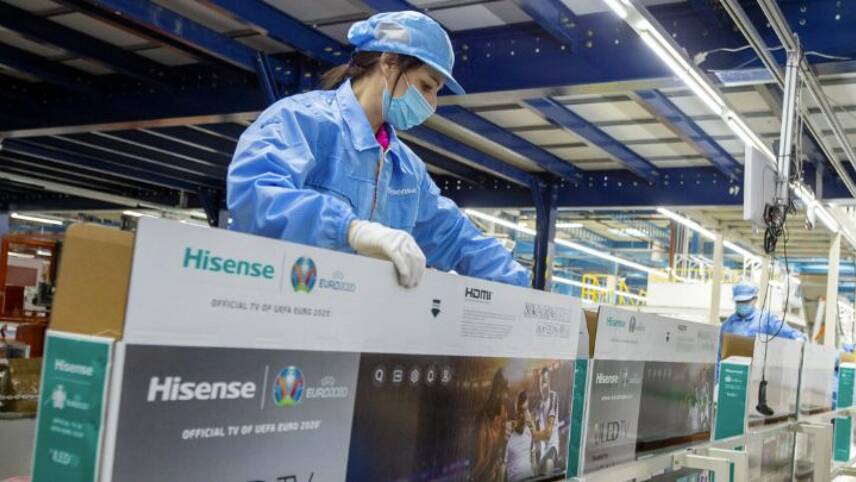Register for free and continue reading
Join our growing army of changemakers and get unlimited access to our premium content

Image: Hisense Europe
The company announced the commitment late last week after posting a 76,000-tonne reduction in its direct (Scope 1) and power-related (Scope 2) emissions for 2021, against 2020 levels. This reduction was largely due to changes to manufacturing processes and technologies in China, where it is headquartered.
Hisense has, for example, shifted to 100% solar electricity at manufacturing sites and has invested in energy-efficient cooling systems at factories. Other emission-reduction moves have included simplifying product design and automating certain processes.
Building on this progress, the company is planning to reduce Scope 1 and 2 emissions further this year, and to help customers to mitigate the generation of emissions to an extent greater than that generated by its operations. It is planning to ultimately deliver a 202% reduction in emissions in 2022, against a 2021 baseline.
The majority of this will be delivered by the provision of energy-efficient technologies to consumers and to businesses.
On the consumer side of things, Hisense produces laser TVs which it claims consume just one-third of the power that would be used to run an LCD TV of the same size. It also manufactures bulky goods including washing machines that are touted as more energy-efficient than most other models.
Through its B2B business, Hisense is planning to scale digital solutions that help medical organisations to save energy and resources, as well as smart city solutions. Its smart city technologies have been implemented in more than 160 cities to date, and use the cloud to help cities access real-time data on things like traffic and pollution levels. Using live data and data forecasting, businesses and local authorities can identify and plan to rectify environmental challenges.
Hisense has not, at this stage, specified precisely how much of the 202% year-on-year emissions reduction will be achieved through a combination of actions in-house, the provision of tech and services to customers and the use of carbon offsetting or insetting.
“As a global business, we need to make every effort to reduce our impact on the environment,” said Hisense UK’s vice-president Howard Grindrod. “We believe the target set for 2022 is a first step to achieving this.”
Corporate climate commitments
While the wording of the commitment from Hisense is striking, it is worth noting that several businesses have a commitment to help customers and clients mitigate more greenhouse gases than are generated by their own operations.
BT, for example, last year achieved its 3:1 carbon commitment – to help customers save three times as much CO2 as it generates. It subsequently moved its 2045 net-zero target forward to 2030 for operations and 2040 for the value chain.
Similarly, US-based telecoms giant AT&T has pledged to help business clients avoid at least one billion metric tonnes – one gigaton – of greenhouse gas emissions by 2035 and impact investor and consultancy Anthesis has pledged to support projects that collectively avoid, reduce and remove three billion tonnes (three gigatons) of carbon by the end of the decade.
The Hisense announcement comes amid heightened scrutiny of corporate climate commitments. A report published this week by non-profit As You Sow, assessing how 55 of the largest US-based corporates are responding to the growing global net-zero movement, gave none of the companies a top score for target-setting around emissions reductions.
Sarah George


to mitigate the generation of emissions to an extent greater than that generated by its operations" – is this against a counterfactual scenario where customers simply buy less energy efficient hardware? Is this ‘scope 4’ emissions?